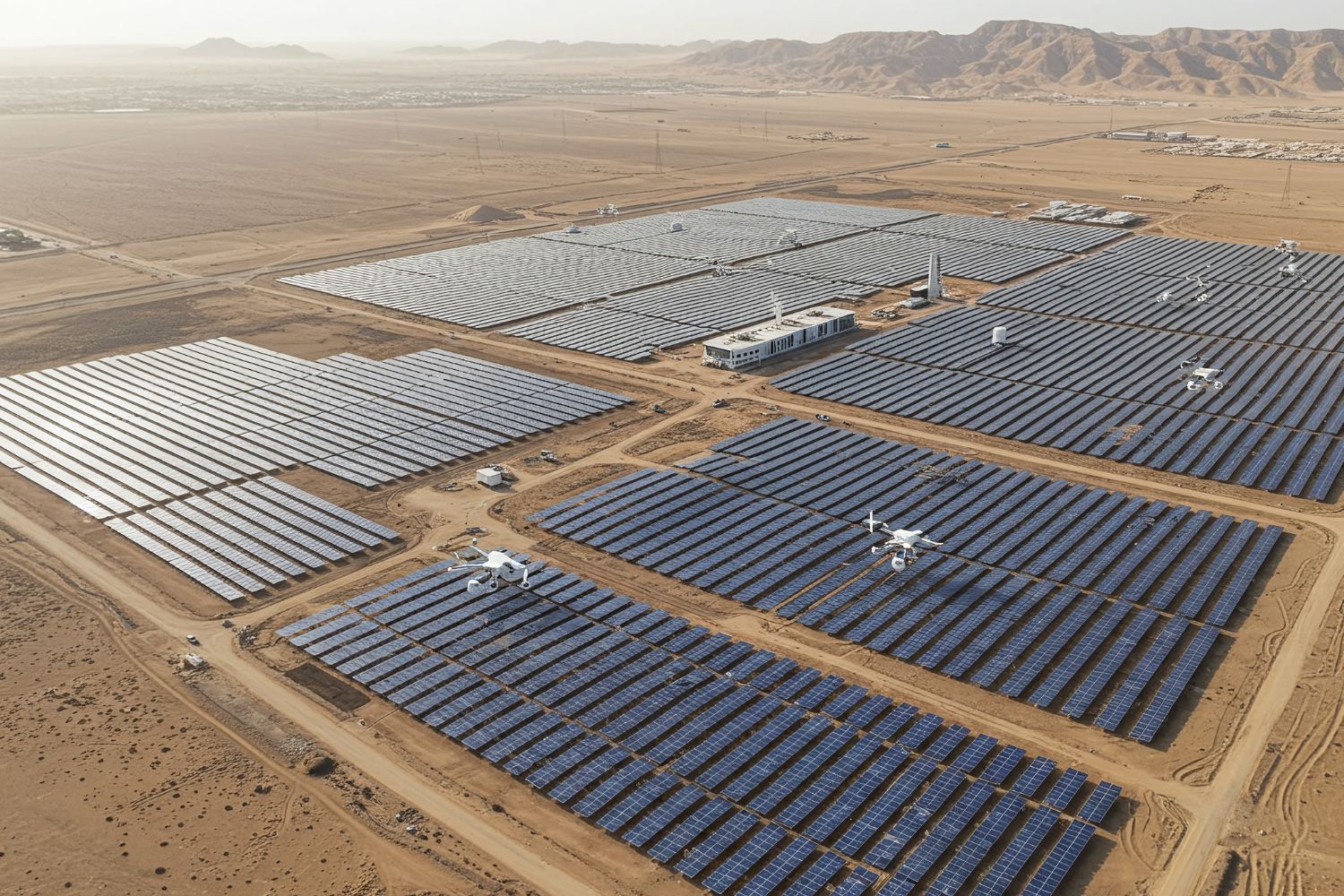Abu Dhabi builds 1.4 GW solar plant in Al Khazna to power 160,000 homes and cut 2.4M tons of CO₂ yearly, advancing UAE's 60% renewable energy goal by 2035.

Table of contents
Abu Dhabi has just signed an agreement for a 1.4 GW solar photovoltaic plant, which will be built in the Al Khazna area.
The project, Khazna Solar Photovoltaic, is a solar energy facility capable of generating enough electricity to power approximately 160,000 homes throughout the United Arab Emirates. This considerable-sized plant positions itself as a crucial pillar for EWEC (Emirates Water and Electricity Company), which is planning to bring Abu Dhabi’s solar generation capacity beyond 18 GW by 2035.
The company has awarded the contract to a consortium of clean energy giants: ENGIE, a global leader in low-carbon solutions, and Masdar, which serves as the local shareholder and is a worldwide pioneer in the renewable energy sector.
More sun, less carbon
Beyond the direct benefits for users who will utilize the energy produced, the project will generate evident climate advantages: it’s expected to avoid the emission of over 2.4 million metric tons of carbon dioxide per year.
An important signal: from a country among the world’s largest hydrocarbon exporters, the United Arab Emirates demonstrates the will (and opportunity) to show that it’s possible to reconcile economic growth and environmental sustainability.
Not just panels: robots and big data

The project, in addition to being very extensive, leverages technological innovation: it will consist of nearly three million rotating solar panels. These will actively follow the sun’s path throughout the day, a technique that maximizes solar energy capture and, consequently, production.
Crucial for operational efficiency, especially in a desert environment, will be the integration of advanced digital solutions. This includes the use of IoT (Internet of Things) sensors, cloud-based monitoring platforms, big data analytics and, particularly, robotic cleaning systems. These robots are essential for maintaining optimal panel performance while simultaneously reducing maintenance costs.
2035 target for Abu Dhabi
Abu Dhabi is pursuing a sustainable development strategy, diversifying its energy mix with the inclusion of large-scale solar, wind and nuclear energy.
The objectives set by EWEC are clear: by 2035, the Emirate aims to meet 60% of total energy demand through renewable and clean sources. In the short term, the goal is to produce over 50% of Abu Dhabi’s energy needs from renewable sources by 2030.
These efforts are expected to profoundly transform the energy sector, so much so that the average carbon dioxide intensity from electricity generation will undergo a drastic 54% drop by 2030, halving emissions compared to 2019.
Source: EWEC
